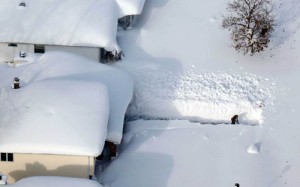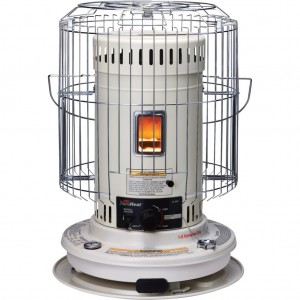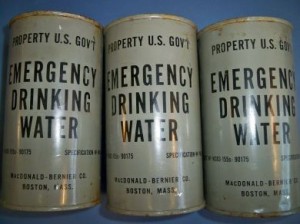By Brian Meyer
With cold weather and snow encroaching on us as well as the disastrous snow seen in the Buffalo, NY area recently, the idea of a winter home emergency kit is looking better and better. Part of being a prepper [2] is being prepared for just about anything the world can throw at you and while many of our plans are for epic disasters and TEOTWAWKI-level events, smaller seasonal disasters happen far more often, so being prepared for these too only makes sense.
There’s a lot that goes into a winter home emergency kit and while you probably have many of these supplies around in one form or another, having them together and ready for a winter disaster is vital to getting through a disaster in the freezing cold successfully.
SEE ALSO: 20 Household Items That Double as Emergency First Aid [3]
Emergency Heat
While not having power in the warmer months is merely an annoyance, being without power for anything more than a day or so in the winter is a very big deal if you live where the winter weather is truly felt.
Make sure to have emergency heat available for power outages [5] and that you have enough heat for your entire family and pets. Kerosene space heaters and propane heating elements are both great sources of emergency heat. These are shunned for indoor use today for fear of fumes and carbon monoxide but used correctly are totally safe indoors and if you’re at least in your mid 30s, your parents probably used a kerosene heater in your basement and you turned out just fine, right?
All you need to do is keep your house in the mid 40s during an emergency to stay safe. Pipes won’t freeze and you won’t get frostbite, but you’ll definitely be uncomfortable. Depending on your stash of kerosene or propane you can adjust this temperature as needed.
Water and Food
You should already have a food [6] and water plan in place, but for the colder months you need to augment it just a little. In cold, dry situations your body needs more water and food so whatever your current plan is, up it by about 25% per person.
Since there is a real possibility for water to freeze if your emergency heat doesn’t go according to plan, make sure you have a secondary cooking option as well. While gas stoves will work without electricity, that doesn’t mean gas lines can’t experience issues as well. A camp stove that runs off propane is a great option in this case, as it could be used inside with ventilation, but more simple stoves and cooking over a fire can be done outside as well. Just be prepared for both options and have the stove tested and ready, and fire wood chopped.
Clothing
This goes back to the emergency heat idea with a little extra backup. Even if you don’t normally go outside for extended periods of time when it’s cold you need to make sure you have enough cold weather clothing to stay warm for extended periods of time without external heat.
If disaster strikes and lasts for an extended period of time you’ll need to plan for the situation in which your emergency heat runs out. Also, you may need to walk to a store or to a neighbor to lend a hand; both cases require snow gear to get out. Plan for how the worst weather possible can be in your area, then add an extra layer.
Make a List
Lists are a prepper’s best friend. You already know this, but it doesn’t mean it’s still not important to mention. Not only do you need the traditional lists like food and water expiration, but you need home safety lists as well, like where your water shutoff valves are, and how many need shut off in case of freezing temperatures as well as what needs shut off to stop the electricity from coming into your house to prevent a surge.
Make a list of what needs done in a winter emergency and when one strikes just go down the list item by item. If you have family members in the house with you make sure they understand the list, too.
Tools and Repair Materials
Everything seems to break when it gets cold out, and finding the right tool for the job can be tricky, especially if the power’s out and it’s getting cold. Check your tools now and make sure they’re organized and ready for the winter. This means not only wrenches and pliers, but saws and shovels for outdoor issues like downed trees, too.
As for materials, plan for the worst and get the supplies to cover those issues. If there are trees near your house you should have tarps and nails to secure the tarp with in case a tree gets up close and personal with your roof. Plastic sheeting and duct tape can be your best friend in the case that a window is broken and while it may not offer the same insulation as a high efficiency window, it’ll save a lot of wind from coming in and a decent amount of heat from going out.
Finally, keep pipe repair kits and patch kits on hand for frozen pipes and other random plumbing issues. These rear their ugly heads in the winter and if you’re stuck at home during an ice storm, you won’t be able to hit the local hardware store, which will probably be closed anyway.



